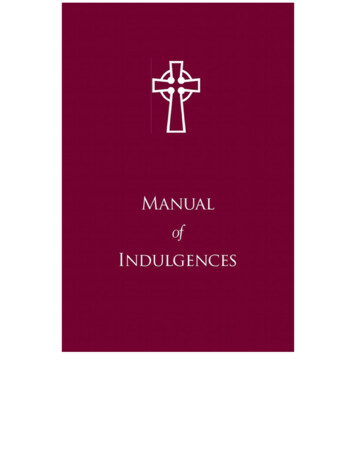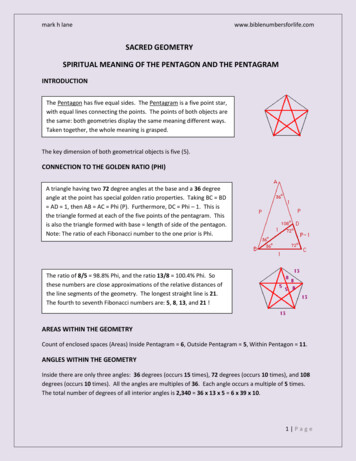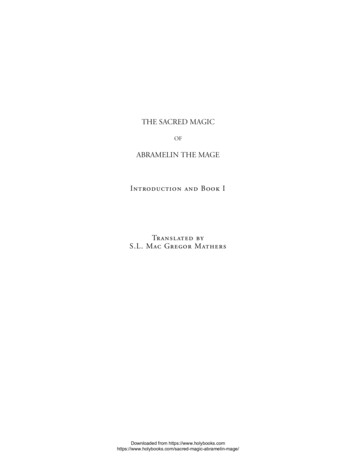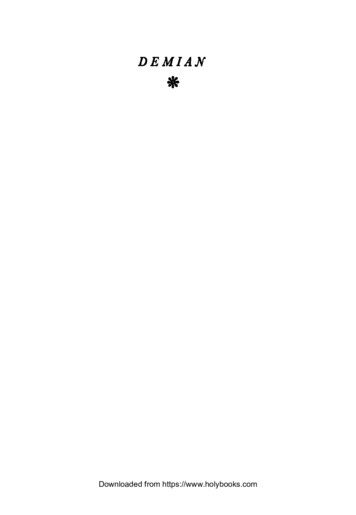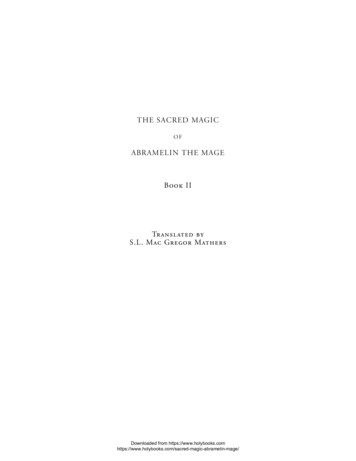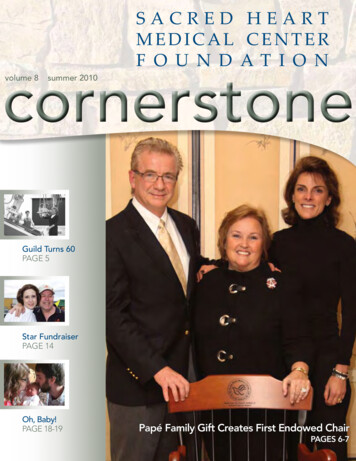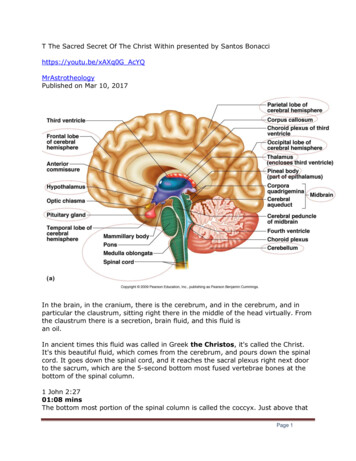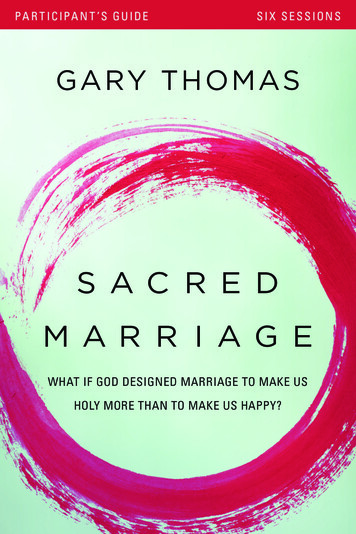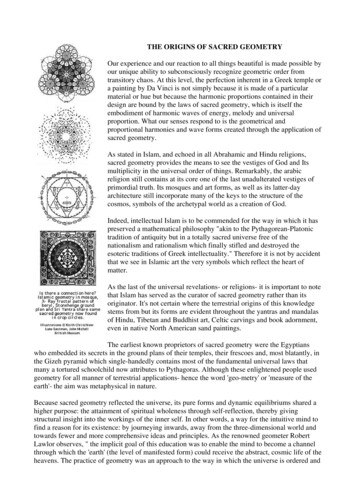Transcription
Original title Al Azif - azif being the word used by the Arabs to designate that nocturnalsound (made by insects) supposed to be the howling of daemons.Composed by Abdul Alhazred, a mad poet of Sanaá, in Yemen, who is said to haveflourished during the period of the Ommiade caliphs, circa 700 A. D. He visited the ruins ofBabylon & the subterranean secret of Memphis & spent ten years alone in the greatsouthern desert of Arabia - the Roba El Khaliyeh or "Empty Space" of the ancients - &"Dahna" or "Crimson" desert of the modern Arabs, which is held to be inhabited byprotective evil spirits & monsters of death. Of this desert many strange & unbelievablemarvels are told by those who pretend to have penetrated it. In his last years Alhazreddwelt in Damascus, where the Necronomicon (Al Azif) was written, & of his final death ordisappearance (738 A. D.) Many terrible & conflicting things are told. He is said by EbnKhallikan (12th cent. biographer) to have been seized by an invisible monster in broaddaylight & devoured horribly before a large number of fright-frozen witnesses. Of hisDownloaded from www.holybooks.com
madness many things are told. He claimed to have been the fabulous Irem, or City ofPillars, & to have found beneath the ruins of a certain nameless desert town the shockingannals & secrets of a race older than mankind. He was only an indifferent Moslem,worshipping unknown entities whom he called Yog-Sothoth & Cthulhu.In A. D. 950 the Azif, which had gained a considerable tho' surreptitious circulation amongthe philosophers of the age, was secretly translated into Greek by Theodorus Philetas ofConstantinople under the title Necronomicon. For a century it impelled certainexperimenters to terrible attempts, when it was suppressed and burnt by the patriarchMichael. After this it is only heard of furtively, but (1228) Olaus Wormius made a Latintranslation later in the Middle Ages, & the Latin text was printed twice - one in the 15thcentury in black-letter (evidently in Germany) & once in the 17th - (prob. Spanish) botheditions being without identifying marks, & located as to time & place by internaltypographical evidence only. The work (both Latin & Gk.) was banned by Pope Gregory IXin 1232, shortly after its Latin translation, which called attention to it. The Arabic originalwas lost as early as Wormius' time as indicated by his prefatory note & no sight of theGreek copy (which was printed in Italy bet. 1500 & 1550) has been reported since theburning of a certain Salem man's library in 1692. A translation made by Dr. Dee was neverprinted, & exists only in fragments recovered from the original MS. Of the Latin texts nowexisting one (15th cent.) is known to be in the British Museum under lock & key, whileanother (17th cent.) is in the Bibliotheque Nationale at Paris. A 17th cent. edition is in theWidener Library at Harvard, & in the library of Miskatonic University at Arkham. Also in thelibrary of the Univ. of Buenos Ayres. Numerous other copies probably exist in secret, & a15th century one is persistently rumoured to form part of the collection of a celebratedAmerican millionaire. A still vaguer rumour credits the preservation of a 16th cent. Greektext in the Salem family of Pickman; but if it was so preserved, it vanished with the artist R.U. Pickman, who disappeared early in 1926. The book is rapidly suppressed by theauthorities of most countries, & by all the branches of organized ecclesiasticism. Readingleads to terrible consequences. It was from rumours of this book (of which relatively few ofthe general public know) that R. W. Chambers is said to have derived the idea of his earlynovel "The King in Yellow".H. P. LovecraftChronologyAl Azif written circa 730 A. D. at Damascus by Abdul AlhazredTr. to Greek 950 A. D. as Necronomicon by Theodorus PhiletasBurnt by Patriarch Michael 1050 (i.e. Greek Text) - Arabic text now lostOlaus translates Gr. to Latin 12281232. Latin Ed. (& Gr.) suppr. By Pope Gregory IX14. black-letter edition published (Germany)Downloaded from www.holybooks.com
15. Gr. text printed in Italy16. Spanish printing of Latin textPREFACETHE PRESENT MANUSCRIPT was delivered into the hands of the Editor by a priest whohad managed to get ordained through un-canonical methods which have beenentertainingly described in the several books and articles on the ecclesiastic phenomenon,the "wandering bishops". Just such an "unorthodox" prelate was Fr. Montague Summers,who wrote numerous books on demonology, witchcraft, and the like. Suffice it to say, wewere rather doubtful as to the authenticity of the work before us. In the first place, it was inGreek and for quite awhile it was difficult to ascertain what it might actually be, save for thetitle NECRONOMICON and the many weird drawings. In the second place, aftertranslation, we found several internal inconsistencies and some evidence that wouldsuggest we did not possess the entire Work. There may still be some missing or theirregular monastic might have withheld certain of the chapters. As the chapters are notnumbered, it is too difficult to day.A great deal of misfortune accompanied the publication of this book. First, we wentthrough more than one translator. The last finally absconded with his preface, describinghis work in the some detail. This, we will have to do from memory in the following pages.At one point, an unscrupulous publisher from the West Coast took a copy of the initialpreface and some of the miscellaneous pages in translation (including some dummies,which we were in the habit of giving potential publishers for our protection) and went off,and has not been heard from again.At a crucial stage in the preparation of the manuscript, the Editor was stricken with acollapsed lung and had to undergo emergency surgery to save his life.But, let us proceed with a description of the contents of the NECRONOMICON:Within these pages a series of myths and rituals are presented that have survive thedarkest days of Magic and occultism. The exorcisms and bindings of the famous Maqlutext are here presented for the first time in English, although not completely: for theoriginals in their entirety were evidently not known to the author of the NECRONOMICON,nor are they to present scholarship; the various tablets upon which they were written beingcracked and effaced in many places, rendering translation impossible. The MAGAN text,which comprises the Creation Epic of the Sumerians (with much later glosses) and theaccount of INANNA's "descent into the Underworld", along with more extraneous matter, ispresented. The unique "Book of the Entrance" has no counterpart in occult literature, andthe drawings of Magical seals and symbols are wholly new to anything that has yetappeared on the contemporary occult scene - although bearing some resemblances tovarious diagrams found in the ancient Arabic texts of the last millennium. Although some ofthe characters found in these pages can be traced to Mandaic and Demotic sources, andDownloaded from www.holybooks.com
are evidently of a much later date than the Rites of Sumer, the overall appearance of theseals is quite unusual, almost surreal.The Book begins with an introduction by the alleged author, the Mad Arab (the name thatLovecraft made famous, 'Abdul Alhazred' does not appear in our copy of the Ms.), andends with a sort of epilogue by the same Arab. We have called the first part "TheTestimony of the Mad Arab" and the latter "The Testimony of the Mad Arab, the SecondPart." The Second Part if the most chilling. The author has, by this stage in the writing ofhis opus, become fearful for his soul and begins to repeat himself in the text, saying thingshe has already said in previous chapters as though having forgotten he had said them, orperhaps to stress their importance. The Second Testimony is riddled through with nonsequiturs and bits of incantation.He does not finish the Book.It trails off where he would have signed it, presumably, in the Arab manner, but giving hislineage. Instead, it ends before he can name himself or even one relation. We can onlyimagine with horror what fate befell this noble Sage.Another problem that confronts the Editor is the suspected frequency of the copyist'sglosses; that is, there do seem to be occasionally bits of sentence or fragments ofliterature that would seem to be inconsistent with the period in which the text was written.However, no final word can be said on this matter. The difficulty arises in the age-oldquestion of "which came first, the chicken or the egg?". For instance, in the MAGAN text,the final verses read though from the Chaldean Oracles of Zoroaster:"Stoop not down, therefore, into the darkly shining world," which might have been of Greekorigin and not Zoroastrian. It is a question for scholars.The etymology of certain words is a game that has fascinated both the Editor and perhapsa score or more of Sumerian researches of the past. The Sumerian origin of many of thewords and place-names we use today providesus with an insight into our own origins. For instance, the Sumerian word for the temple isBAR, from which we get our word "barrier", or so it is said by Waddell. This makes sensein the context with the erecting and maintaining of barriers against the hostile forcesOutside.The etymology is even dramatic where Magic is concerned, and aids us in understandeven Crowley's system better than we do. As an example, Crowley of (or Aiwass) ends theBook of the Law with the words "AUM.HA." In the Sumero-Aryan Dictionary by Waddell weread that the word AUM was known to the Sumerians, in almost the same sense that itwas, and is, known to the Hindus. It is a sacred word, and pertains to the Lord ofMagicians, ENKI. Further, the Greek spelling of ENKI was EA, by which he is mostcommonly known in the European texts which treat of Sumeriology. In the Greek alphabet,EA would appear as HA. Q.E.D: AUM.HA betrays the essential Sumerian character of thatBook.After the initial Testimony, we come to the chapter entitles "Of the ZONEI and TheirAttributes", Zonei is, of course a Greek word and refers to the planetary, or heavenlyDownloaded from www.holybooks.com
bodies; for they are "zoned", i.e., having set courses and spheres. They are also known assuch in the Chaldean Oracles. The 'spirits' or bodies that exist beyond the zonei are calledthe azonei, meaning "un-zoned". Whether this refers to the so-called "fixed " stars (havingno sphere ascertainable to the early astronomers) or the comets, is unknown to the Editor.Whatever the case may be, the zonei seem to include the Seven Philosophical Planets,i.e., including the Sun and Moon as planetary bodies, along with Mercury, Venus, Mars,Jupiter and Saturn. Each has their own seal and their own Number.Kenneth Grant, author of Aleister Crowley and the Hidden God, may be interested to know(or may already know) that the Number of the Sumerian Goddess of Venus, hence of Loveand War, is Fifteen. In many of the ancient tablets of that period, she is actually referred toas "the Fifteen", as a shortcut to spelling out the whole Name in cuneiform, was assume.Grant made much of "the Goddess Fifteen" in his study of Crowley's system as related toTantricism, without mentioning the Name by which this Goddess is quite well-known, oreven mentioning Her native country!After the chapter on Zonei, we come to the "Book of Entrance" which is really a system ofself-initiation into the planetary spheres and may have something to do with the planetaryarrangement of the steps of the ziggurats of Mesopotamia, which were seven storeyedmountains. Not much is revealed to the potential candidate for initiation as to how these"gates" work, or what he might find there, save to say that the key of one Gate lies inmastering the Gate before it. The Mad Arab was either keeping a sacred Secret, or foundhuman language inadequate to the task of describing what other initiates in similarsystems have expressed in the vague abstractions of the truly illuminated, likening theexperience to an LSD trip.The "Incantations of the Gates" follow, and are probably meant to accompany thepreceding chapter, being prayers proper to each of the celestial Gates. The "conjuration ofthe Fire God" follows this, and resembles the others in its mixture of Greek and Sumerianphrases. It should be noted here that wherever a Sumerian phrases. It should be notedhere that wherever a Sumerian phrase appears in the original MS. we have kept it as it is,un-translated, as we expect the Mad Arab would have wanted it. Quite possibly, even hedid not know the exact meaning of much of the conjurations in the Old Tongue, but viewedit as a 'barbarous' tongue' which must be preserved because of its essential Power.Indeed, with the publication of this Book, Sumerian may become as popular amongmagicians as the strange, angelic language of Enochian, discovered by Dr. Dee inElizabeth England.In Greek, in the original MS., a common incantation would look something like this (usingRoman characters for the Greek):'O Kakos Theos'O Kakos Daimon'O DaimonPNEUMA TOU OURANOU THUMETHERE!PNEUMA TES GES THUMETHATE!(O Wicked GodO Wicked DemonO DemonDownloaded from www.holybooks.com
Spirit of the Sky, Remember!Spirit of the Earth, Remember!)Yet, a word like SHAMMASH, the Name of the Solar Deity, would read SAMAS orSAMMAS, and in the text of the NECRONOMICON we would make the word read like itsoriginal.The "Conjuration of the Watcher" follows the Fire God conjuration. The word "watcher" issometimes used synonymously with "angel", and sometimes as a distinct Race, apart fromangelos: egragori. The Race of Watchers are said not to care what they Watch, save thatthey follow orders. They are somewhat mindless creatures, but quite effective. Perhapsthey correspond toe Lovecraft's shuggoths, save that the latter become unweildly anddifficult to manage .After the Watcher, comes the MAKLU text, which appears to be a collection of exorcisms,which includes the famous "Xilka Xilka Besa Besa" incantation, in the original, to which atranslation has been appended in this work - a translation evidently not at hand when theauthor compiled the MS. Thus, for the first time, this much-rumoured exorcism is availablein full and in English.After this, the "Book of Calling" needs little explanation. It is the grimoire of theNECRONOMICON, containing the formulae of ritual conjuration, as well as the seals anddiagrams to accompany the rites. It is followed by "The Book of Fifty Names" being fiftyseparate powers of the God MARDUK, defeater of Chaos. This is interesting, in that thenames seem to come from the Enuma Elish, in which the Elder Gods confer these fiftynames upon MARDUK as titles, in their appreciation of his routing of Evil. A sigil is givenfor each of the Names, and a word of Power for most of them.Then appears the Centrepiece of the Book, the MAGAN text. The word MAGAN maymean the Land of the MAGAN which was said to lie in the West of Sumer. For a time, itseems the name MAGAN was synonymous with the Place of Death - as the Sun 'died' inthe West. Hence, it is a bit confusing as to what MAGAN is really supposed to mean in thistext, but in context the "Place of Death" explanation seems quite valid. The MAGAN text isnothing more than an incomplete and free-form version of the Creation Epic of Sumer,along with INANNA's Descent into the Underworld, and many glosses. We are told howMARDUK slays TIAMAT - after much the same fashion that the Chief of Police of Amityslays the great white shark in Benchley's novel JAWS, blowing an evil wind (the oxygentank) into Her mouth and sending in an arrow (bullet) in after it to explode her. Surely, thetwo or three most box- office successful films of the past few years, JAWS, THEEXORICST and, perhaps, THE GODFATHER, are an indication that the essence ofSumerian mythology is making itself felt in a very real way in this, the latter half of theTwentieth Century?After the long and poetic MAGAN text, comes the URILLIA text which might be Lovecraft'sR'lyeh Text, and is subtitled "Abominations". It has more specifically to do with the worshipof the Serpent, and the nature of the cults that participate in the Concelebration of Sin.Again, more conjurations and seals are given, even though the reader is charged not touse them; an inconsistency that is to be found in many grimoires of any period andperhaps reveals a little of the magicians's mentality; for there is very little that is evil to theDownloaded from www.holybooks.com
advanced magus, who cares not if he deals with angelic or demonic forces, save that hegets the job done!Then, following the URILLIA text and forming the very end of the received MS., is theSecond Part of the Testimony of the Mad Arab. It is a haunting and sorrowful occultpersonality. Was he really mad? This is perhaps a question that will go on for as long asMan tries to understand himself; himself as a part of the cosmic dance and spiral, whichincludes the satanic as well as the deific, the sad as well as the happy. Perhaps the Arabwas privy to some other-worldly secret that he could not reveal. Perhaps he had openedthe Door by mistake, his own personal Gate to the Abyss, and was forced to cross itsthreshold into the Unknown. We may never know.Or, we may wish we never had.TOPCHART OF COMPARISONS(showing some relationships to be found between the mythos of Lovecraft, the Magic ofCrowley, and the faith of Sumer.)Lovecraft CrowleyCthulhuAzathothThe DunwichHorrorShubNiggurathOut of SpaceIA!SumerThe Great Beast asrepresented in "CTHDH Ctha-lu, Kutulu666"Aiwass (?)Azag-thothChoronzonPazuzuPanSub Ishniggarab (?)The AbyssIO! IAO!Absu; Nar MattaruIA (JAH; EA; Lord of Waters)The AR, or UB (Plough Sign; grey Star carvenThe Pentagram the original pentagram and thesign of the Aryan Race)Erim (the Enemy; and the Sea as Chaos; Gothic;Orm, or Worm , great Serpent)The Fivepointed.VermisMysteriisThe SerpentThis is, of course, by no means a complete list but rather an inspirational sampling.Meditation upon the various Things mentioned in the Mythos will permit the scholar todraw his own conclusions; research upon the etymology of both Lovecraft's and Crowley'sDownloaded from www.holybooks.com
respective literature enables the occultist to discover the ancient Names and Numbers formuch of his own, familiar, material.(Note: that Lovecraft may have head or Crowley is hinted at darkly in his short story "TheThing On The Doorstep" in which he refers to a cult leader from England who hadestablished a covenstead of sorts in New York. In that story, published in Weird Tales in1936, the cult leader is closely identified with chthonic forces, is described as "notorious",and linked to the strange fate that befell the protagonist, Edward Derby.)TOPSUPPLEMENTARY MATERIAL TO 777THE CHART that follows is based on research presently available to the Editor with regardto Sumerian and Assyro-Babylonian religions. Entries in parentheses refer to the state ofcorrespondences before the advert of the Elder Gods, the Race of MARDUK; that is, itreflects the nature of the cosmos before the Fall of MARDUK from Heaven. (Names ofzodiacal constellations are after Budge's renderings.)0 Table VII [A.C.]Table XXV [S.]1 .ANU (TIAMAT)2 Sphere of the Primum MobileENLIL (ABSU)3 Sphere of the Zodiac or Fixed Stars ENKI; LUMASHI (IGIGI)4 Sphere of SaturnADAR5 Sphere of JupiterMARDUK6 Sphere of MarsNERGAL7 Sphere of the SunUTU8 Sphere of VenusINANNA9 Sphere of MercuryNEBO10 Sphere of the MoonNANNA11 Sphere of the ElementsKIA12 AirANNA13 MercuryGUDUD14 MoonSIN15 VenusDLIBAT16 AriesAGRU (XUBUR)17 TaurusKAKKAB U ALAP SHAME (KINGU)18 GeminiRE'U KINU SHAME U TU'AME RABUTI (VIPER)19 CancerSHITTU (SNAKE)Downloaded from www.holybooks.com
20 Leo21 Virgo22 Jupiter23 Libra24 Water25 Scorpio26 Sagittarius27 Capricorn28 Mars29 Aquarius30 Pisces31 Sun32 Fire33 Saturn34 Earth35 SpiritKALBU RABU (LAKHAMU)SHIRU (WHIRLWIND)UMUNPADDUZIBANITUM (Ravening Dog)BADURAKRABU (SCORPION-MAN)PA-BIL-SAG (HURRICANE)SUXUR MASH (FISH-MAN)MASTABARRUGULA (HORNED BEAST)DILGAN U RIKIS NUNI (WEAPON)SHAMASHAGKAIMANUKIAZITOPNOTES ON PRONUNCIATIONWE CANNOT BE absolutely how Sumerian and Akkadian were spoken; but many usefulguidelines are available to the student, including the transliterated tablets found all overMesopotamia. Basically, we can offer the following principles which should prove of valuein reciting the foreign language instructions :Vowelsa as in "father"e as in "whey"i as in "antique"o as in "boat" (but rarely found)u as in "zulu"ConsonantsMost are basically the same as in English. The Sumerians did not have an alphabet as weknow it, but they had developed a syllabary, very much like the Japanese "Kana" script oftoday. In phonetic transliterations, the English spelling sought to approximate theSumerian pronunciation. However, there are a few sounds which English does notpossess, and which have been put into phonetic variations. Important examples below :X as in the German "ach"Downloaded from www.holybooks.com
CH (same as above)Q as in "like"K (same as above)SH as in "shall"SS as in, perhaps, "lasso"; a hissing "s" common to Arabic languagesZ as in "lots"; a hard "ts" sound, not quite as in "zoo"Remember, in the transliterations which follow, every letter must be pronounced. Thereare no schwas or silent syllables in Sumerian. Hence, "KIA" is pronounced "keeya";"KAIMANU" is pronounced "ka-ee-mah-nu" or, if spoken rapidly, the two initial vowelsounds slur into 'kigh' rhyming with "high"The incantations should be said carefully and slowly at first, to familiarise oneself with thetongue-twisting phrases. A mistake may prove fatal to the WorkTOPTHE SPELLS (TRANSLATED)WHERE POSSIBLE, the Editor has taken every opportunity to find the original Sumerianor Akkadian translation of a given Greek charm of conjuration. These will be given here.Also, the reader will find English translations of the Sumerian charms as they are given inthe NECRONOMICON. Not al of the charms are available this way, and sometimes wehave had to make do with near misses. Much of what is found here has come from theMaklu text, of which the only extant translation is in the German of Tallqvist ("DieAssyrische Beschworungsserie Maqlu nach dem originalen im British MuseumHerausgegeben" Acta Societatis Scientiarum Fennicae, Tomm. XX, No. 6, Helsingforsiaemdcccxcv). The word "maklu" or "maqlu" itself is controversial, but Tallqvist seems to thinkthat it does, indeed, mean "burning"; especially so as the incantations to be found thereininvariably entail burning something, usually a doll made in the likeness of a witch or evilsorcerer that the magician wished to dispose of. Hence, we have here probably thearchetype of the Great Burning Times of the Inquisition, when people were condemned toa fiery death as Witches and Pagans. The chant "burn, witch! burn!" can be found in theMaklu text, in all its pristine glory. Indeed, Cthulhu Calls.The Conjuration "The Binding of the Evil Sorcerers"Alsi ku nushi ilani mushitiItti kunu alsi mushitum kallatum kuttumtumAlsi bararitum qablitum u namaritumAshshu kashshaptu u kashshipanniEli nitum ubbiraanniIli-ia u Ishtari-ia ushis-su-u-eli-iaDownloaded from www.holybooks.com
Eli ameri-ia amru-usanakuImdikula salalu musha u urraQu-u imtana-allu-u pi-iaUpu unti pi-ia iprusuMe mashtiti-ia umattu-uEli li nubu-u xiduti si-ipdiIzizanimma ilani rabuti shima-a dababiDini dina alakti limdaEpu-ush salam kashshapi-ia u kashshapti-iaSha epishia u mushtepishti-iaIs mass-ssarati sha mushi lipshuru ruxisha limnutiPisha lu-u ZAL.LU Lishanusha Lu-u TabtuSha iqbu-u amat limutti-ia kima ZAL.LU litta-tukSha ipushu kishpi kima Tabti lishxarmitqi-ishrusha pu-uttu-ru ipshetusha xulluquKal amatusha malla-a sseriIna qibit iqbu-u ilani mushitum.The Conjuration "XILQA XILQA BESA BESA"or"A Most Excellent Charm Against the Hordes of Demons" etc.Arise! Arise! Go far away! Go far away!Be shamed! Be shamed! Flee! Flee!Turn around, go, arise and go far away!Your wickedness may rise to heaven like unto smoke!Arise and leave my body!From my body, depart in shame!From my body flee!Turn away from my body!Go away from my body!Do not return to my body!Do no come near my body!Do not approach my body!Do not throng around my body!Be commanded by Shammash the Mighty!Be commanded by Enki, Lord of All!Be commanded by Marduk, the Great Magician of the Gods!Be commanded by the God of Fire , your Destroyer!May you be held back from my body!"Another Binding of the Sorcerers"Ssalmani-ia ana pagri tapqida duppiraDownloaded from www.holybooks.com
Ssalmani-ia ana pagri taxira duppiraSsalmani-ia iti pagri tushni-illa duppiraSsalmani ini ishdi pagri tushni-illa duppraSsalmani-ia qimax pagri taqbira duppiraSsalmani-ia ana qulqullati tapqida duppiraSsalmani-ia ina igari tapxa-a duppiraSsalmani-ia ina askuppati Tushni-illa duppiraSsalmani-ia ina bi'sha duri tapxa-a duppiraSsalmani-ia ana GISHBAR tapqida duppiraThe Conjuration of the Mountains of MASHU"May the mountain overpower you!May the mountain hold you back!May the mountain conquer you!May the mountain frighten you!May the mountain shake you to the core!May the mountain hold you in check!May the mountain subject you!May the mountain cover you!May the mighty mountain fall on you,May you be held back from my body!(Note: the original translator had noted the resemblance between the Greek word for Lors,kurios, and the Sumerian word for mountain, kur, and for a type of underworld, chthoic,monster which is also called kur and which refers to the Leviathan of the Old Testament.Also, in this particular conjuration, the word for mountain is shadu - shaddai ? The OldSerpent KUR is, of course, invoked every day by the Christians: Kyrie Eleison!)TOPCOMMON SUMERIAN WORDS ANDPHRASES IN ENGLISHSumerianAkhkharuAlalAlla XulBarra!Dingir XulEdin Na Zu!GelalEnglishVampireDestroyerEvil GodBegone!Evil GodGo to the Desert! (a form of exorcism)IncubusDownloaded from www.holybooks.com
Gigim xulEvil SpiritGidim XulEvil ntomLalssuSpectreLilitSuccubusMaskim XulEvil Fiend (Ambusher, Lier-In-Wait)Mulla XulEvil DevilRabishu(same as Maskim Xul)TelalWicked Demon (Warrior)UggaeGod of DeathUrukuLarvaeUtuk XulEvil SpiritZi Dingir Anna Kanpa! Spirit, God of the Sky, Remember!Zi Dinger Kia Kanpa! Spirit, God of the Earth, Remember!TOPA WORD CONCERNING THE ORIGINALMANUSCRIPTTHE EDITOR and the Publishers anticipate that there will be a demand at first forprivileged views of the original NECRONOMICON, whether out of curiosity's sake, or bynervous experimenters who will be certain that we did not copy a sigil correctly, etc. Let ushasten to state at this point that the original Ms. is neither the property of the Editor, northe Publishers. We were given the right to translate and publish this work, with as muchadditional and explanatory material as needed, but not the right to hold the MS. up topublic inspection. We regret that this is the case, but we also feel that it might beadvisable, in reference to the dangerous character of the work involved. Perhaps one daya book will be written on the hazards of possessing such an original work in one's home oroffice , including the fearful hallucinations, physical incapacities, and emotional malaisethat accompanied this work from the onset of the translation to the end of its finalpublished form.Therefore, as a matter of policy, we cannot honour any requests to see theNECRONOMICON in its original state.TOPDownloaded from www.holybooks.com
BANISHINGSRead this section carefully.In the interim period between the translation and the publication of this work, the Editor,along with a circle of initiates in another discipline, undertook to experiment with the ritualsand forces outlined in the NECRONOMICON. In using the material alone, or within aWestern ceremonial structure (such as the Golden Dawn system) we came upon startlingdiscoveries in both cases: there are no effective banishings for the forces invoked in theNECRONOMICON itself! The rituals, incantations, formulae of this Book are of ancientorigin, comprising some of the oldest written Magical workings in Western occult history.the deities and demons identified within have probably not been effectively summoned innearly six thousand years. Ordinary exorcisms and banishing formulae have thus farproved extremely inadequate: this, by experienced magicians. Hence, the followingrecommendations.The religion of the ancient Sumerian peoples seems to have been lunar-oriented, areligion - or religion - Magical structure - of the night, of darkness in a sense. Invocationsusing solar formulae have proved thus far effective in successfully banishingNECRONOMICON demons and intelligences. For instance, the Kaddish prayer of theJewish faith contains some solar elements that have proved resilient to inimical genii, andthe vibration of the Lord's Prayer for Christians is also a workable method.We suggest that individual operators utilise an equivalent solar (i.e., positive light)invocation from their own religion or the religion of their ancestors, should the no longerhave a religion or should they have changed it in their lifetime.For best practical purposes in the beginning - for those intent on actually using the ritualscontained herein - it is advisable to take especial care in the construction of the Magicalcircle and of all Magical defences. A preliminary period of purification is well in orderbefore attempting anything in this grimoire. Persons of unstable mental condition, orunstable emotional condition, should not be allowed, under any circumstances, to observeone of these rituals in progress. That would be criminal, and perhaps in suicidal. One ofour colleagues was fearfully attacked by his dog directly following a fairly simple anduncomplicated formula from this book. This is definitely not a Gilbert chemistry set.The method of the NECRONOMICON concern
The Book begins with an introduction by the alleged author, the Mad Arab (the name that Lovecraft made famous, 'Abdul Alhazred' does not appear in our copy of the Ms.), and ends with a sort of epilogue by the same Arab. We have called the first part "The Testimony of the Mad Arab" and the
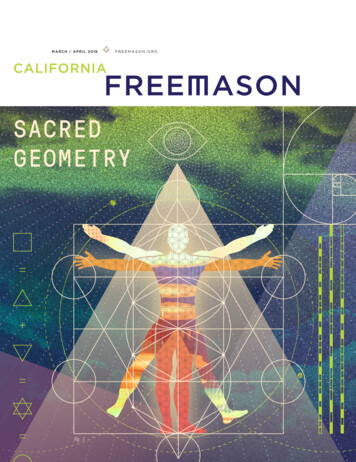
![The Book of the Damned, by Charles Fort, [1919], at sacred .](/img/24/book-of-the-damned.jpg)
